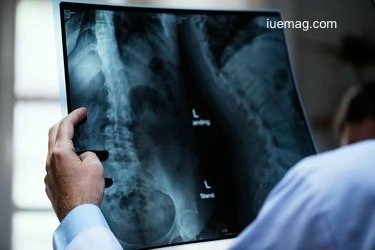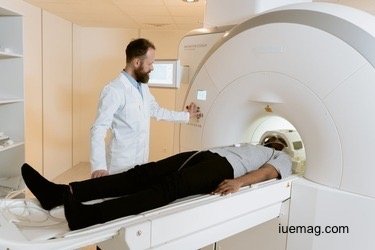

Health & Fitness
A collection of write-ups with health care tips, expert advices and inspiration for overall wellness and fitness.

Ad
Which Service Needs Medical Imaging Practice
 Medical centers like PRP Imaging which provides medical imaging practice handle a large volume of X-rays, CT scans, MRIs, and other diagnostic images on a daily basis. With patients needing imaging done around the clock, even small to mid-sized practices can benefit enormously from teleradiology services.
Medical centers like PRP Imaging which provides medical imaging practice handle a large volume of X-rays, CT scans, MRIs, and other diagnostic images on a daily basis. With patients needing imaging done around the clock, even small to mid-sized practices can benefit enormously from teleradiology services.Teleradiology allows radiologic images such as X-rays, CT scans, and MRIs to be transmitted electronically to offsite radiologists for quick interpretation. This on-demand coverage and specialist support empower imaging centers to provide faster diagnostics and superior patient care 24/7.
Boost Productivity During Peak Hours
 One of the biggest advantages of teleradiology for medical imaging practices is having extra radiologist support during busy times. Peak periods, like mornings before regular working hours, often lead to reporting backlogs. Transmitting images to tele-rad services enables more images to be read simultaneously by additional specialists working remotely. This allows backlogs to clear faster so patients don’t have extended waits to discuss results with their doctor.
One of the biggest advantages of teleradiology for medical imaging practices is having extra radiologist support during busy times. Peak periods, like mornings before regular working hours, often lead to reporting backlogs. Transmitting images to tele-rad services enables more images to be read simultaneously by additional specialists working remotely. This allows backlogs to clear faster so patients don’t have extended waits to discuss results with their doctor.Round-the-Clock Coverage Without Added Overheads
Having radiologists in-house around the clock is not practical for most medical imaging clinics from cost and HR perspectives. Teleradiology services offer the benefit of extended coverage without centers needing to employ extra full-time radiologists on demanding overnight and weekend schedules. Cloud-based image transfer to tele-rad providers means small practices can offer robust 24-hour diagnostics similar to large hospital networks.
Access Top Specialty Expertise
General radiologists on staff at smaller clinics may not subspecialize in areas like neuroradiology, cardiothoracic imaging, or pediatric cases. For those looking to broaden their understanding or specialize further, exploring educational opportunities in W-Radiology can be an invaluable step in career development. Teleradiology services have extensive specialty expert networks. Images can be routed to the most fitting tele-rad specialist to benefit diagnostic accuracy and detail. This depth of expertise allows clinics to elevate care standards across all imaging modalities.
Enhanced Quality Control and Standardization
Many teleradiology groups have sophisticated clinical workflows to enhance quality and standardize protocols. Speech recognition software, structured reporting templates, peer review processes, and other methods are applied to strengthen accuracy while reducing discrepancies between interpreters. This level of quality control may exceed what a small practice can institute alone, helping minimize errors and instill greater clinician confidence in diagnostic reports.
 Seamless Integration with Patient EMRs
Seamless Integration with Patient EMRsReputable teleradiology providers have systems to embed reports, images, and other patient data directly into a clinic’s electronic medical records (EMRs). Smooth EMR integration creates a unified patient record across the care continuum to streamline workflow for ordering clinicians. It also reduces delays between image acquisition, reading, and reporting to aid faster clinical decision-making.
Disaster Recovery Services
If storms, power outages, or other events interrupt imaging services at a clinic, business continuity is crucial. By building in teleradiology support for contingency situations, practices can redirect images to tele-rad platforms during local disruptions so patient care continues unimpeded. This type of disaster recovery capability is invaluable yet often infeasible without outsourced radiology partnerships.
Cost-Effective Growth Enabler
For medical imaging clinics looking to expand their volume and services, hiring more in-house radiologists full-time poses a financial risk. Teleradiology provides more scalable support to accommodate growth without sizable capital outlay. Centers can also use tele-rad services to trial new modalities like MRI or PET scanning to establish demand before investing in the necessary onsite technology and specialized staff.
Get the Latest & Recommended articles in your Inbox
Conclusion In today’s healthcare environment, partnering with a trusted teleradiology provider checks many critical boxes—from improving diagnostics turnaround to boosting operational resilience. As medical imaging continues transitioning from analog to digital, embracing innovative tele-rad solutions positions practices to deliver gold-standard care while maintaining financial viability. The scalability, specialty depth, and quality controls offered by outsourced radiology make it vital medicine for modern medical imaging centers.
Copyrights © 2024 Inspiration Unlimited eMagazine
Any facts, figures or references stated here are made by the author & don't reflect the endorsement of iU at all times unless otherwise drafted by official staff at iU. This article was first published here on 27th December 2023.



